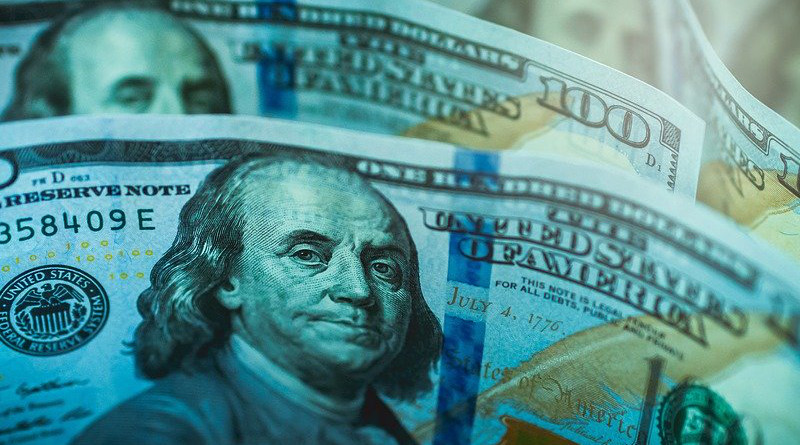Mothball Central Banks And Dollarize – OpEd
Central banks issue currency and exercise wide discretion over the conduct of monetary policy. Although widespread today, central banks are relatively new institutional arrangements. In 1900, there were only 18 central banks in the world. By 1940, 40 countries had them, and today, there are 160.
Before the rise in central banking (monetary nationalism), the world was dominated by unified currency areas, or blocs, the largest of which was the sterling bloc. As early as 1937, the great Austrian economist and Nobel winner Friedrich von Hayek warned that the central banking fad, if it continued, would lead to currency chaos and the spread of banking crises. His forebodings were justified. Currency and banking crises have engulfed the international financial system with ever‐increasing strength and frequency. Indeed, for most emerging‐market countries with central banks, hot money flows are frequent and so are exchange‐rate and domestic banking crises. What to do?
The obvious answer is for vulnerable emerging‐market countries to do away with their central banks and domestic currencies, replacing them with a sound foreign currency. Today, 32 countries are “dollarized” and rely on a foreign currency as legal tender.
Panama, which was dollarized in 1903, illustrates the important features of a dollarized economy. By joining the U.S. dollar bloc, Panama eliminated exchange‐rate risks and the possibility of a currency crisis vis‐à‐vis the U.S. dollar. In addition, the possibility of banking crises is largely mitigated because Panama’s banking system is integrated into the international financial system. The nature of the banks that hold general licenses provides the key to understanding how the system as a whole functions smoothly. When these banks’ portfolios are in equilibrium, they are indifferent at the margin between deploying liquidity (lending or borrowing) in the domestic market and doing so abroad. As the liquidity (credit‐creating potential) of these banks changes, they evaluate risk‐adjusted rates of return in the domestic and international markets and adjust their portfolios accordingly. Excess liquidity is deployed domestically if domestic risk‐adjusted returns exceed those in the international market. It’s deployed internationally if the international risk‐adjusted returns exceed those in the domestic market. This process is thrown into reverse when liquidity deficits arise in Panamanian banks.
The adjustment of banks’ portfolios is the mechanism that allows for a smooth flow of liquidity (and credit) into and out of the banking system (and the economy). In short, excesses or deficits of liquidity in the system are rapidly eliminated because banks are indifferent as to whether they deploy liquidity in the domestic or international markets. Panama can be seen as a small pond connected by its banking system to a huge international ocean of liquidity. Among other things, this structure renders the traditional lender‐of‐last‐resort function performed by central banks unnecessary. When risk‐adjusted rates of return in Panama exceed those overseas, Panama draws from the international ocean of liquidity, and when the returns overseas exceed those in Panama, Panama adds liquidity (credit) to the ocean abroad. To continue the analogy, Panama’s banking system acts like the Panama Canal to keep the water levels in two bodies of water in equilibrium. Not surprisingly, with this high degree of financial integration, there is virtually no correlation between the level of credit extended to Panamanians and the deposits in Panama. The results of Panama’s dollarized money system and internationally integrated banking system have been excellent when compared with other emerging‐market countries:
- Interest rates have mirrored world market rates, adjusted for transaction costs and risk.
- Inflation rates have been somewhat lower than those in the U.S.
- Panama’s real exchange rate has been very stable and on a slightly depreciating trend vis‐à‐vis that of the U.S.
- Panama’s banking system, which operates without a central‐bank lender of last resort, has proven to be extremely resilient. Indeed, it weathered a major political crisis between Panama and the United States in 1988 and made a strong comeback by early 2000.
Emerging‐market countries should follow Panama’s lead and “dollarize.” Most central banks in emerging countries produce junk currencies, banking crises, instability, and economic misery. These central banks should have been mothballed and put in museums long ago.
*Dr. Steve H. Hanke is a professor of Applied Economics at the Johns Hopkins University in Baltimore. He is a senior fellow and director of the Troubled Currencies Project at the Cato Institute in Washington, D.C.
This article also appeared on National Review (Online) on July 28, 2020, and at the CATO Institute: https://www.cato.org/publications/commentary/mothball-central-banks-dollarize


There may be benefits, but it means you are giving the US a huge interest free loan. And how much should one trust the dollar if Trump gets 4 more years? Which is of course managed solely with US interests in mind, anyway.